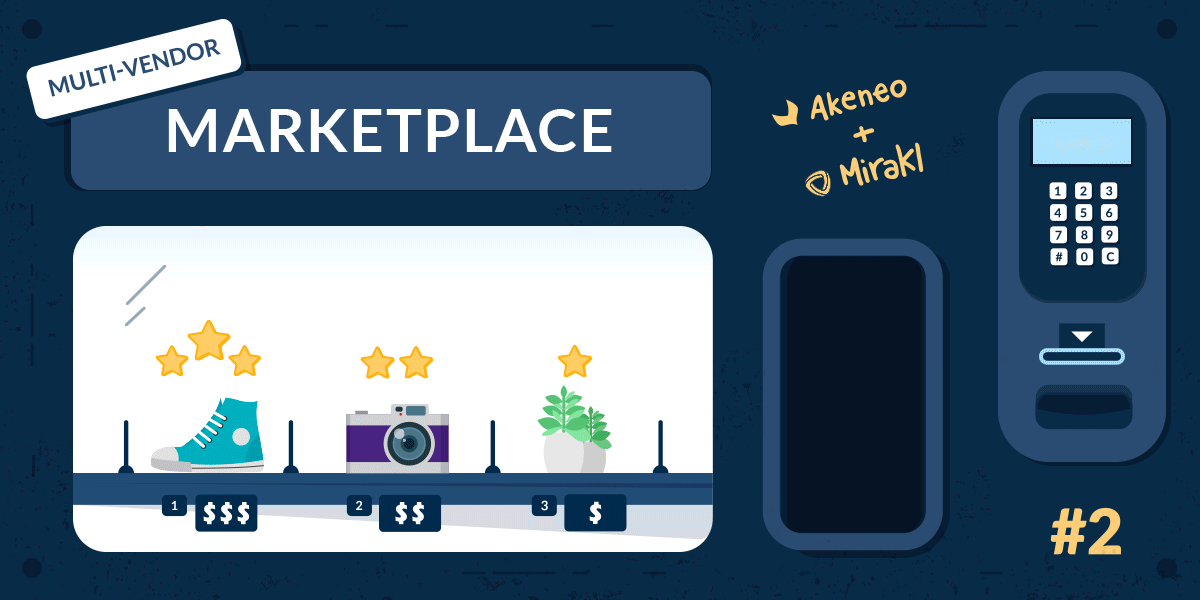When using a PIM with your multi-vendor marketplace, quality standards can be embedded and automatically enforced, the performance of your vendors can...

Keywords
When using a PIM with your multi-vendor marketplace, quality standards can be embedded and automatically enforced, the performance of your vendors can be easily tracked, and non-performing vendors can be easily corrected or terminated.
A PIM supports the different needs of both the Vendor Manager and the Product Manager in fulfilling their distinct roles:
A PIM supports strategic vendor management across the portfolio of vendors and a better product experience for end buyers, resulting in lower returns with increased traffic and conversion.
Marketplaces can fuel rapid growth in new product categories and/or geographic markets. Partnering with marketplace vendors can radically speed up entry into these new markets. Partnerships slash inherent risk as well.
Allowing partners to carry the burden of additional inventory and logistics reduces the need to invest heavily in an untested market and provides the opportunity to explore new markets with relatively low risk. Once market demand is proven, the risk of brand investment drops significantly.
A commonly overlooked benefit of a marketplace strategy is revenue diversification.
A smart marketplace approach can be as profitable as direct sales for the sponsoring brand.
Even if margins are higher for direct sales, the revenue increase in a marketplace approach outweighs the cannibalistic effect of marketplace sales. If you don’t offer a product/service that the buyer wants, where they want it, and with the right shipping offer… you will lose the sale. Marketplaces help you retain some of that revenue while building customer satisfaction.
Ricard Case Study
Ricard decided to test opening a new sales channel as a departure from its historical business model. The Marketplace LesNouveauxCavistes offers independent and local liquor stores an opportunity to expand their offerings online.
The marketplace, powered by Mirakl marketplace management software, launched at the start of 2017. It provides the following benefits:
The biggest risk in hosting a multi-vendor marketplace is damage to brand reputation from non-performing vendors. Studies show that if something goes wrong in the transaction with a third-party vendor, 85% of the customers blame the seller and not the marketplace brand itself.
The second biggest risk is from poor customer experience when sellers don’t provide high quality product information. This degrades the shopping experience and increases the number and severity of downstream problems with customer satisfaction following the transaction.
The two critical tools needed to solve the brand risk challenge of launching a marketplace are:
Good Online Marketplace Management software is a key requirement for launching a marketplace. There’s no need to homebrew software. Excellent best-of-breed tools (such as Mirakl, used in the Ricard study above) enable you to automate vendor relationships within the marketplace.
Online Marketplace Management software needs to provide full control over quality and KPIs for service levels, response time, logistics, customer ratings, etc. This allows you to easily maintain quality levels to protect your brand from non-performing vendors without a lot of time-consuming manual reporting and management tasks.
Product Information Management (PIM) software is the final piece of the puzzle in creating a thriving marketplace.
Akeneo PIM is tailored for marketers to easily personalize workflow processes, leverage the product family data structure to simplify and streamline data capture, and easily assign responsibilities across the organization. It’s powerful, flexible, easy-to-use, and integrates with virtually every storefront, marketplace, ERP, and digital asset management tool available. And it’s open source.
You can take our suggestion of choosing Akeneo as your PIM of choice with a grain of salt (although seriously – it’s open source – why wouldn’t you at least try it out ). But what you shouldn’t take with a grain of salt is that a PIM is an absolute necessity in a successful marketplace process.
Better product descriptions = Higher Customer Satisfaction
Better Conversion Rates
Lower Return Rates
If your biggest risk in implementing a marketplace strategy is reputational damage from sub-standard product listings (and vendors), the best way to mitigate that risk is to ensure that every product listing in your marketplace meets your quality standards for product description and detail. Better product descriptions equal lower returns and higher customer satisfaction.
With Akeneo PIM, it’s easy to ensure that every product description on your site, whether your own or one of your marketplace partners’, is complete, accurate, and up-to-date.
Akeneo PIM makes it easy to enforce quality standards. If you’re already using Akeneo PIM for your current product information you can simply extend your existing product information quality standards to your marketplace partners. Likewise, Akeneo will automatically import your partner’s product data from a variety of spreadsheets and ERP systems or other sources. Akeneo then flags SKUs that need additional product information, media files, or translation for accurate completion.
Managing your marketplace using Akeneo PIM benefits your partners as well, since no reputable vendor wants to post product information with incomplete, outdated, or erroneous information.
Multi-vendor marketplaces can be a great strategy to extend product offerings and expand geographic reach while increasing customer satisfaction and revenues. In order to reap the rewards of your marketplace, be sure to arm yourself with two essential tools: Online Marketplace Management software and PIM.
Looking for the world’s best PIM software?
Over 40,000 merchants worldwide choose Akeneo.
Find out what Akeneo can do you for you with a test-drive or a free consultation! Contact us for more information!

Lernen Sie konkrete Maßnahmen kennen, die Sie für Ihre Marke jetzt ergreifen sollten, um die Einhaltung der kommenden Vorschriften für die...
Mehr lesen
Erfahren Sie mehr über die Funktionsweise, den historischen Kontext und die Einflüsse von Künstlicher Intelligenz (KI) auf den Einzelhandel....
Mehr lesen
Zu Ehren des Earth Day werfen wir einen Blick darauf, warum Verbraucher und Gesetzgeber Druck auf Unternehmen ausüben, transparente, nachhaltige...
Mehr lesen